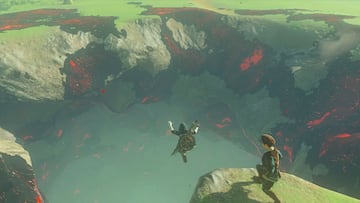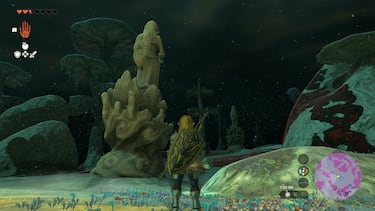Nintendo Explains How They Made TOTK’s Depths Without Load Times
During a presentation at the CEDEC 2024 developer event, Nintendo revealed how they worked to reduce load times in Zelda: Tears of the Kingdom.

The latest release of The Legend of Zelda: Tears of the Kingdom continues to amaze us with the different layers it has managed to present. Whether it’s its creative side that has led players to turn the game into an impressive parade of creations, its stunning story that lets players create their own narrative, to the way the game has improved the physics aspects, making it one of the best titles in recent years.
On this last point lies how the developers and engineers at Nintendo managed to expand on the world of Hyrule that we first discovered in Breath of the Wild. Tears of the Kingdom not only brought back the title we already knew but also presented a world in the sky as well as in its underground. This last part posed problems for its developers, and now they have revealed how they solved it.
How Nintendo solved loading times in Tears of the Kingdom
During CEDEC 2024 (Computer Entertainment Developers Conference) in Yokohama, Japan, Nintendo gave a lecture on the development of The Legend of Zelda: Tears of the Kingdom and how they managed to bring this massive 3D world to the Nintendo Switch (via Famitsu). One of the first details that was mentioned was that for this sequel, they did not have the technical limitations that they had for the Wii U, the console that Breath of the Wild was released on. This allowed the developers to have more freedom with the hardware and expand the game vertically. However, one of the problems they faced was long load times, especially when entering the Depths, something that, according to its developers, caused the game to crash.
To address this, the team implemented four ideas to improve load times. First, they used a profile generator to visualize “at what stage of the underground jump does it take to load”. This allowed them to make the process of loading certain areas more efficient, and to start loading other objects at certain “blank times” when nothing was loading.

The second idea was to “reduce the amount of files to load”, this was achieved by setting multiple points between the terrain and the objects to be loaded in terms of distance, giving priority to what is within the player’s visual range.
Related stories
The third step was to reduce the size of the data by adjusting the resolution of textures, especially those whose appearance does not change much when the resolution is reduced. The last step was to determine in advance when the player was at a “possible waypoint to the underground” in order to start loading files. All of these steps resulted in an optimization that made jumps to this area of the map as smooth as possible, given the console’s hardware.
Follow MeriStation USA on X (formerly known as Twitter). Your video game and entertainment website for all the news, updates, and breaking news from the world of video games, movies, series, manga, and anime. Previews, reviews, interviews, trailers, gameplay, podcasts and more. Follow us now!


Complete your personal details to comment